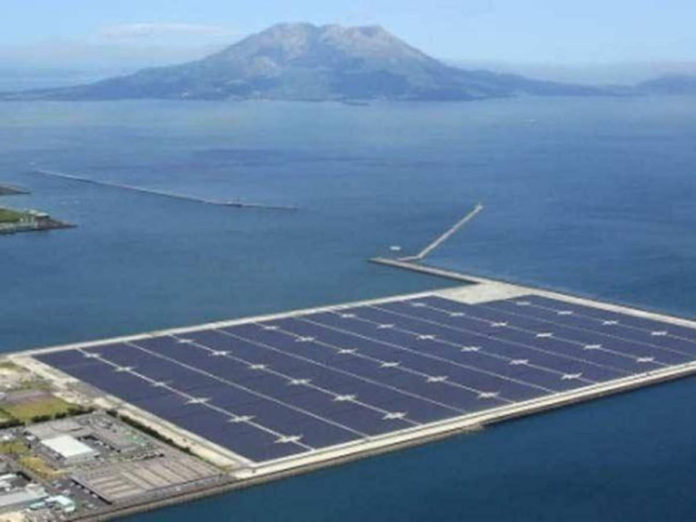Floating solar, or floating photovoltaics (FPV), is a solar array that floats upon a body of water. The solar panels are placed on a buoyant structure to keep them above the water’s surface and are usually located on relatively calmer bodies of water such as ponds, lakes and man-made dam reservoirs.
Advantages of FPV
One of the greatest advantages of FPV is that it does not occupy land that could be used for other purposes and eliminates the need for vegetation and tree removal. There is also no risk of obstruction or shade caused by nearby trees, objects or buildings. The floating structure provides shade upon the water surface, decreasing evaporation and water loss in summer months and also resulting in lower water temperatures, which are less susceptible to harmful algal blooms. The water has a cooling effect on the equipment, which is good for efficiency, as high temperatures decrease solar panel performance.
Disadvantages of FPV
FPV installations are more costly than land-based solutions due to specialized equipment needed, although costs are expected to drop with further developments in technology. Also, the majority of FPV are larger in scale, making them suitable for communities, utility companies and municipalities, but not ideal for individual households.
The FPV situation worldwide and in the United States
The worldwide operational capacity of FPV was only 10 MW in late 2014. That figure increased 100 times, reaching 1.1 GW, by September 2018. The total global potential of FPV is conservatively estimated at 400 GW. This is approximately equal to the total solar photovoltaic installations worldwide at the end of 2017.
Due to land scarcity, floating solar arrays are becoming more widespread in Asia, while China leads the world in the total operational worldwide 1.1-GW FPV capacity (greater than 99% of the market). China is also currently the world leader in renewable energy investment, with the Chinese government promising $360 billion USD spending on clean energy projects by 2020. Thailand plans on reaching 2.7 GW FPV capacity by 2037, situating multiple floating solar arrays in existing hydroelectric dam reservoirs. Japan’s largest FPV plant, which is found in the Yamakura Dam reservoir and has a capacity of 13.7 MW, became operational in March 2018. And India recently announced a plan to reach 10-GW FPV capacity.
Although the United States had installed the first nonexperimental FPV array in Napa Valley, California, in 2008, as of the end of 2017, the United States had only seven operational floating solar arrays. The U.S. Department of Energy’s National Renewable Energy Laboratory indicates that there are more than 24,000 human-made bodies of water throughout the country with a potential of generating 10% of the nation’s electricity using FPV.
The future of FPV
Floating solar installations have begun to spread throughout Australia, Japan, Europe and South Asia. Japan in particular is looking to renewable energy as an alternative for nuclear energy and has a potential 3-GW capacity through FPV alone.
The technology is also useful because it has the impact of complementing hydropower when installed in dam reservoirs. During seasons of rain and water abundance, hydropower is at the forefront, while summertime and low water levels are more favorable for solar power. The world’s first combined hydro and FPV power plant is in the Alto Rabagao Dam reservoir in Portugal and became operational in 2017.
While it is theoretically possible to install FPV in seas and oceans, the harsh and violent conditions have so far limited their development.
Whereas hydropower accounts for 53% of all operational renewable energy sources worldwide, wind power has a 24% share and solar power is at 18%. The International Energy Agency has named solar energy as the fastest-growing renewable energy source, and the World Bank foresees rapid growth of FPV within the next 20 years. The current trends indicate that FPV is here to stay and expand.






















































